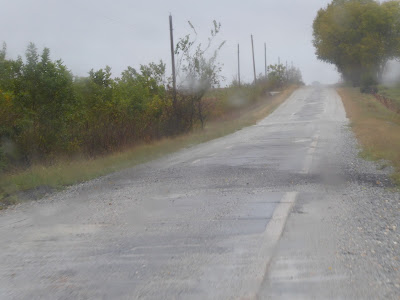What is Route (“root”) 66 and why do people want to travel on it?
From 1926, there was a U.S. highway numbered 66. Early alignments were dirt roads—sometimes mud, sometimes dust, as when the Joad family in John Steinbeck’s The Grapes of Wrath drove them to California. Many people fled the Dust Bowl of Oklahoma for dreams of out west on the “Mother Road.”
Later, in the 1950s and ’60s, Route 66 and its many roadside attractions became a vacation destination in itself. Americans, at least a lot of them, were in love with the automobile and wanted to do everything in their cars, even eat at restaurants and go to the movies. Route 66 catered to this dream, too. There was also a television show based on the Route, and of course, a famous song.
This very popularity led to the Route’s demise. The interstate highway system is often touted as a good example of federal government money spent on a big project that's widely popular. At the same time, the interstates bypassed towns, whereas Route 66 in many cases went right down their main streets. Suddenly, all those mom-and-pop businesses were endangered. The last section of Route 66 to be bypassed by an interstate was around Kingman, Arizona, a few years before I first traveled out west. By 1985, the Route was officially decommissioned as a U.S. highway.
Yet almost immediately, Americans started forming associations to preserve this unique road and the places it goes through. Because Route 66 is unique. Unlike interstates that run east to west or north to south, the Route runs diagonally, from Chicago southwest to Los Angeles. It crosses eight states. In some areas, such as in Missouri, it follows the frontage or “outer road,” sometimes right alongside the interstate, then veers off into farmland or woods. In others, as in Illinois, it goes through seemingly every town—the places that, if they are lucky, are marked at “exits” on the interstate highway.
 |
| Amber waves of grain |
When we started meeting people along Route 66, they told us that most who travel the Route today are foreign visitors. This road trip is legendary around the world, and people come here to discover the real America, perhaps even to dispel their prejudices. Because of COVID-19 and its associated travel bans, those visitors all but disappeared in the past two years. But T. thinks that every American should travel Route 66. It is our birthright.
She’s wanted to take this ultimate road trip since before she met me. For my part, I’m both American by birth and an international visitor. I was intrigued by this slice of Americana that, it is fair to say, many of my fellow citizens know little or nothing about. To see the States in a different way from blocks of red or blue on an election map. Most pertinently, to slow down, stopping at the places other people pass, driving through the places others fly over.
 |
| Bathtub complete with chipped paint, just like growing up |
Route 66 is a road of contrasts, and in that way, it truly represents the U.S.A. It is the Route 66 of motels with pools, drive-in movie theatres, and TV shows, and it is Steinbeck’s Mother Road of Dust Bowl desperation. It has two of the three biggest cities in the U.S. and towns with populations in the hundreds, even ghost towns. It is the white stripe snaking through states both red and blue.
Like many international travelers, our demand to get moving again has been pent up. It has been an ugly past few years and for Americans especially, that ugliness has meant ceasing to talk to each other, to even try to understand. We see each other through social media memes and news stories slanted in both directions. The country seems to be divided rather than united, and as Frankie Goes to Hollywood sang: “When two tribes go to war, one is all that you can score.”
I have no illusions that a Route 66 road trip can solve America or the world’s problems. It does, however, give a different perspective. It is easy for humans to be contemptuous of one another in groups, or as labeled movements. It is different when you meet individuals and they smile (if the smile isn’t masked), or look you in the eye.
 |
| That ribbon of highway |
As in the song by John Mellencamp, I grew up in a small town. There are values with which I was raised there that I treasure, as well as things I now think are wrong and have moved away from (as have many other people from small towns). I understand why people living in those places feel forgotten. I refuse to believe that we have to throw away the values of friendliness in order to confront the parts of our nation that are still in desperate need of healing.
And people are friendly. I cannot speak to everyone’s experience but everywhere we have gone in the world, never mind this country, people are happy to see us. They are welcoming. They want to help.
Come with us and see.


2 comments:
GREAT FIRST INSTALLMENT Jacqui!! Looking forward to the rest! UB
A very thoughtful and encouraging look at journeying down the Mother Road, meeting many friendly people and fascinating places. G & P
Post a Comment